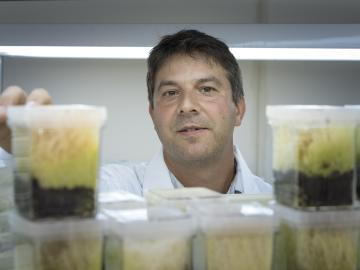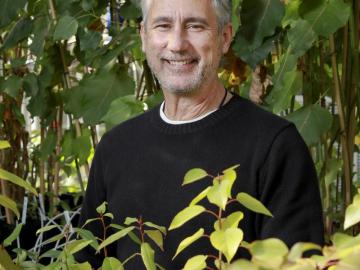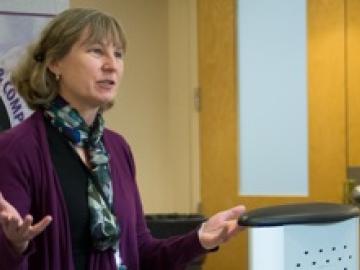
Filter News
Area of Research
- (-) Biology and Environment (63)
- Advanced Manufacturing (5)
- Biological Systems (3)
- Building Technologies (1)
- Clean Energy (104)
- Climate and Environmental Systems (1)
- Computational Engineering (1)
- Computer Science (2)
- Data (1)
- Electricity and Smart Grid (1)
- Energy Sciences (1)
- Fossil Energy (1)
- Fuel Cycle Science and Technology (1)
- Fusion and Fission (19)
- Fusion Energy (3)
- Isotope Development and Production (2)
- Isotopes (15)
- Materials (97)
- Materials Characterization (2)
- Materials Under Extremes (1)
- National Security (26)
- Neutron Science (49)
- Nuclear Science and Technology (8)
- Sensors and Controls (1)
- Supercomputing (90)
- Transportation Systems (1)
News Topics
- 3-D Printing/Advanced Manufacturing (3)
- Artificial Intelligence (3)
- Big Data (5)
- Bioenergy (17)
- Biology (25)
- Biomedical (3)
- Biotechnology (5)
- Buildings (1)
- Chemical Sciences (2)
- Clean Water (3)
- Climate Change (16)
- Composites (1)
- Computer Science (7)
- Coronavirus (4)
- Decarbonization (10)
- Energy Storage (1)
- Environment (33)
- Exascale Computing (2)
- Frontier (2)
- Grid (1)
- High-Performance Computing (10)
- Hydropower (3)
- Isotopes (1)
- Machine Learning (3)
- Materials (3)
- Materials Science (2)
- Mathematics (2)
- Mercury (2)
- Microscopy (3)
- Nanotechnology (1)
- National Security (2)
- Net Zero (1)
- Partnerships (2)
- Physics (1)
- Renewable Energy (1)
- Simulation (13)
- Summit (2)
- Sustainable Energy (10)
- Transportation (1)
Media Contacts

Hydrologist Jesús “Chucho” Gomez-Velez is in the right place at the right time with the right tools and colleagues to explain how the smallest processes within river corridors can have a tremendous impact on large-scale ecosystems.

A quest to understand how Sphagnum mosses facilitate the storage of vast amounts of carbon in peatlands led scientists to a surprising discovery: the plants have sex-based differences that appear to impact the carbon-storing process.

Three scientists from the Department of Energy’s Oak Ridge National Laboratory have been elected fellows of the American Association for the Advancement of Science, or AAAS.

As part of a multi-institutional research project, scientists at ORNL leveraged their computational systems biology expertise and the largest, most diverse set of health data to date to explore the genetic basis of varicose veins.

A team of scientists led by ORNL discovered the gene in agave that governs when the plant goes dormant and used it to create poplar trees that nearly doubled in size, increasing biomass yield for biofuels production

Erica Prates has found a way to help speed the pursuit of healthier ecosystems by linking the function of the smallest molecules to their effects on large-scale processes, leveraging a combination of science, math and computing.

David Weston became fascinated with plant genetics and ecology in college, and now with the support provided by the DOE Office of Science Early Career Research Program, he will link those fields as he studies plant-microbe symbiosis. The research will focus on sphagnum moss, a dominant plant of n...

Working backwards has moved Josh Michener’s research far forward as he uses evolution and genetics to engineer microbes for better conversion of plants into biofuels and biochemicals. In his work for the BioEnergy Science Center at ORNL, for instance, “we’ve gotten good at engineering microbes th...

It’s been 10 years since the US Department of Energy first established a BioEnergy Science Center (BESC) at Oak Ridge National Laboratory (ORNL), and researcher Gerald “Jerry” Tuskan has used that time and the lab’s and center’s resources and tools

Ecologist Virginia Dale is an ORNL corporate fellow and director of the lab’s Center for BioEnergy Sustainability. In her work she focuses on environmental decision making, plant succession, land-use change, landscape ecology, ecological modeling, sustainability, and bioenergy systems. Dale...


